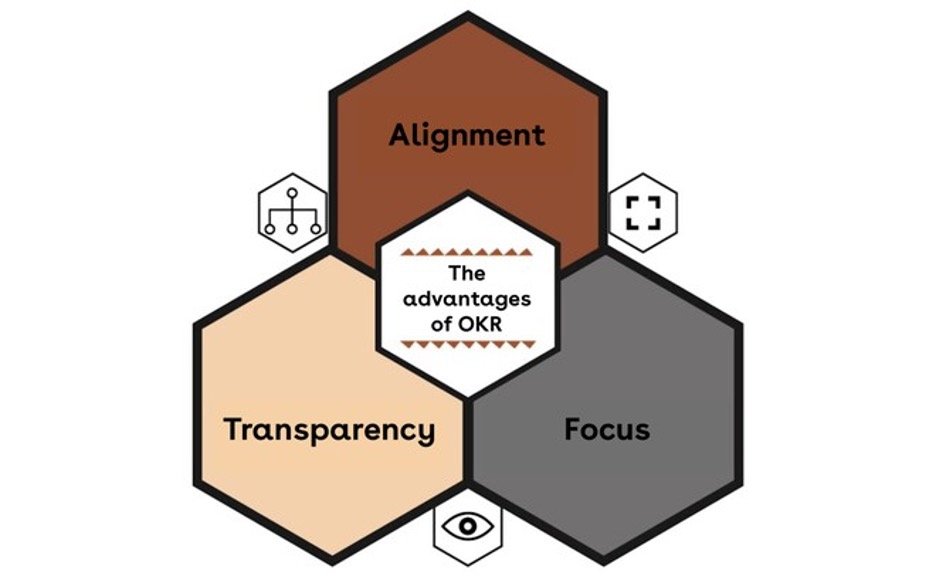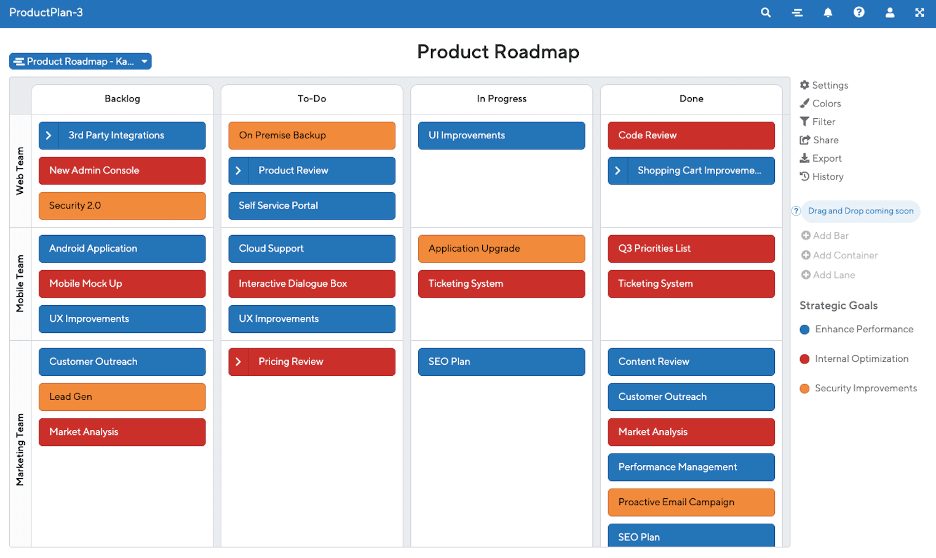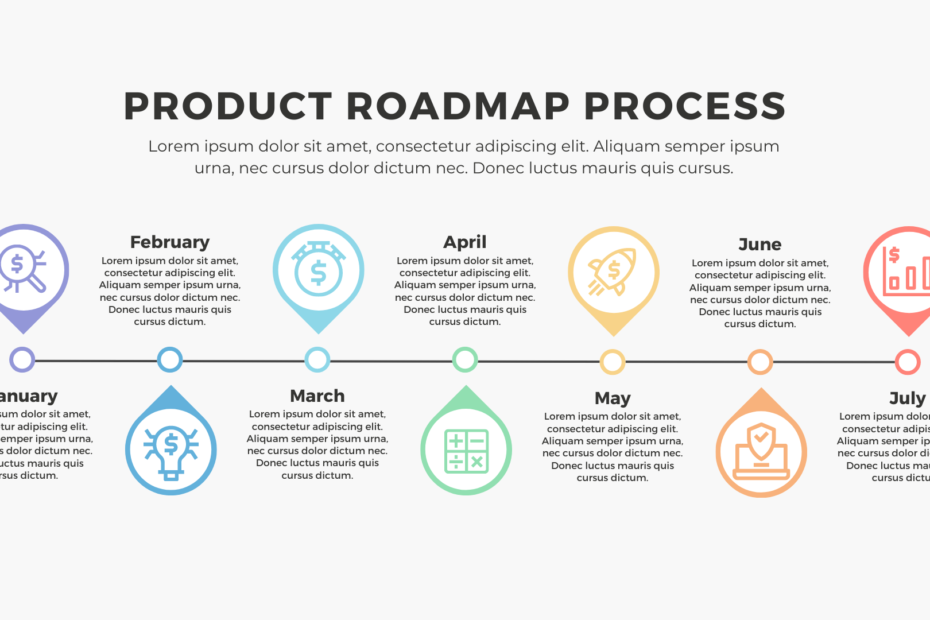Product managers need to know about product roadmaps because they provide a clear description of how a product will change over time. A well-designed roadmap makes sure that everyone knows what is being built, when it will be built, and why. It also helps teams, stakeholders, and the organization come together around a common product vision.
In this blog, we’ll go over how to make a successful product roadmap, talk about its key elements, and provide you examples of how to put these tactics into practice as you go through your product management journey.
What is a Product Roadmap?
A high-level, strategic document that outlines the course of a product for a given time frame is called a roadmap. It’s a communication tool that describes important benchmarks, objectives, and activities to move a product from its current state to the ideal future state rather than a feature list.

Why Product Roadmaps Matter
1. Alignment: The strategic goals of the organization are maintained by cross-functional teams (developers, marketing, sales, etc.) using a product roadmap.
2. Transparency: It gives all parties involved a clear understanding of what priorities are set and why.
3. Focus: By keeping the product team away from unanticipated features or tasks, a roadmap helps them stay focused on the most essential goals.

Steps to Create an Effective Product Roadmap
1. Define the Product Vision and Strategy
The long-term objective of your product should be your first focus, followed by features and schedules. The practical plan to realize that goal is the product strategy. To make sure that every action is in line with the objectives of the business, the roadmap needs to be closely connected to these components.
2. Set Clear Objectives and Key Results (OKRs)
Your roadmap should be based on clear goals rather than merely features. Establish Key Results (KRs) for each target that will enable you to evaluate success. This ties your roadmap to results instead of products.
Example: An objective might be to “increase user engagement,” and the key result could be “improve active user rates by 20% within six months.”
3. Prioritize Initiatives Based on Impact and Effort
There will probably be a lot of features or improvements to consider. Prioritize them according to the work needed and the business impact to ensure the effectiveness of your roadmap. To determine which efforts should be given top priority, you can utilize frameworks such as MoSCoW (Must Have, Should Have, Could Have, Won’t Have) or RICE (Reach, Impact, Confidence, Effort).
Example: If adding a new chat feature could improve team communication for thousands of users (high impact) and only takes two sprints (low effort), it would be prioritized over a feature that affects fewer users and requires more time.
4. Choose the Right Format for Your Roadmap
Product roadmaps come in various formats depending on your audience:
Timeline Roadmaps: Provide a detailed schedule of when particular projects or features will be created and made available. Ideal for executives and stakeholders that require access to time commitments.
Example: A roadmap showing that “Q1 2024” will focus on building integrations, while “Q2 2024” will prioritize mobile app improvements.
Goal-Oriented Roadmaps: Pay attention to why rather than when. These roadmaps are effective for agile teams because they emphasize objectives and results above deadlines.
Example: A roadmap without a set release date that indicates the product’s objective is to “improve onboarding experience” in the upcoming phase.
Kanban Roadmaps: List projects in columns labeled “Backlog, “In Progress”, and “Completed.” helpful for monitoring development in real time.
Example: A roadmap where initiatives like “Improve mobile app speed” move from backlog to progress as development begins.

5. Update the Roadmap Regularly
A roadmap isn’t a static document; it’s a living one. It ought to adjust when new information becomes available, the market conditions change, or priorities change. To maintain the roadmap in line with your product vision, make it a habit to review it on a regular basis. As an illustration, if you receive unexpected customer feedback requesting a new integration, your roadmap might adjust to accommodate this, pushing some lower-priority items to later.
Key Components of a Product Roadmap
Themes or Epics: Broad areas of focus or major product improvements. Themes help avoid getting bogged down by granular features.
Example: “Improve User Experience” could be a theme that spans multiple sprints, including redesigning the dashboard, simplifying the sign-up flow, and optimizing load times.
Initiatives or Features: Specific tasks or product enhancements tied to the themes.
Example: Under the “Improve User Experience” theme, the initiative could be “Redesign the navigation menu.”
Timeline (optional): If your roadmap is time-based, include deadlines or milestone dates.
Example: “Release Beta Version” scheduled for June 2024.
Status Indicators: Visual markers that show the current status of each initiative (e.g., “Planned,” “In Progress,” “Completed”).
Example: The “AI-Powered Task Recommendations” feature is marked as “In Progress” with an estimated completion date.
Example of a Simple Product Roadmap
| Timeframe | Theme | Initiative/Feature | Status |
| Q1 2024 | Improve Collaboration | Add real-time editing feature | In Progress |
| Q1 2024 | Increase User Engagement | Launch mobile push notifications | Planned |
| Q2 2024 | Expand Integrations | Integrate with Slack and Asana | Planned |
| Q2 2024 | Optimize Performance | Reduce app load time by 50% | In Progress |
| Ongoing | User Feedback | Address top 5 user feature requests | Backlog |
A strong product roadmap is a strategic tool that connects your product’s vision with specific actions and quantifiable results. It is more than just a feature list. You can make sure that your product continues to satisfy user needs and corporate goals by setting priorities for initiatives, selecting an appropriate roadmap format, and updating it frequently. Remember, the best roadmaps are clear, flexible, and user-centered, helping you guide your product toward long-term success.
